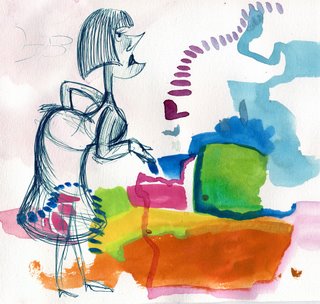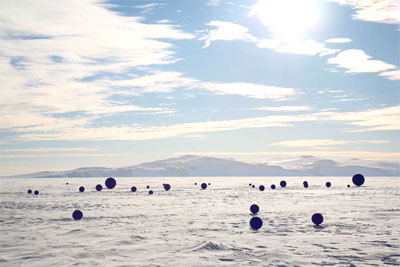Archive for the ‘Cognitive Science’ Category
January 7, 2009
Greetings Somanauts!
Here’s the new year’s update on the free GGI teleseminar: Yoga and the Brain!
First to say, the teleseminar is filling up with folks from different countries, proving the global interest in movement meditation and the brain!
With that in mind, the teleseminar is scheduled for the following dates and times below:
U.S. and U.K. residents:
Date: January 12, 2009
Time: 9 a.m – 10 a.m., Pacific Standard Time
For Australian and AsiaPacific Residents:
Date: January 13, 2009
Time: 10 a.m. (Sydney time zone)
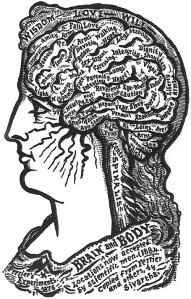
A recap of the teleseminar goal and content:
Who should take this teleseminar? Anyone working with, or interested in, the neurological effects of restorative or high performance training including allied health workers, public policy makers, physicians and physician assistants, psychiatrists, ADHD specialists, social entrepreneurs in health and wellness, and of course, all members of the somatic, yoga, meditation, athletic and martial arts community. (Global citizens please note: The teleseminar will be conducted in English.)
What will I learn: This teleseminar introduces the core neuroscience concepts central to any top quality training program that teaches yoga and movement meditation. Concepts include: neuroplasticity, immersive attention, somasensory integration and more.
What are the key benefits of this teleseminar?: You will leave the teleseminar energized and armed with a grand pattern of understanding how neurologically important your work is as a proponent of yoga movement and meditation. Seminar discussion is particularly valuable for anyone dedicated to improving the development and integration of brain, body and mind.
How do I join this free teleseminar? Simply write to 2docgee@gmail.com with the word “yes, ” along with your state and country of residence. Follow up information will be sent to you at your given email address.
Looking forward to your participation!
May the Breath Be With You!
Dr. G., Founding Director, The George Greenstein Institute, creating a sustainable future by coaching bodies, brains and minds!
The George Greenstein Institute is dedicated to serving the public good, by offering up to date, brain-based education in health, creativity and performance world wide.
Tags:Exercise and the Brain, Meditation and Neuroplasticity, Neuroplasticity, Neuroscience, SpaceSuit Yoga teleseminar, Yoga and the Brain, Yoga and Wholistic Health
Posted in Advances in Neuroscience, Ancient/Future Technologies of the Body, Brain, Brain Technologies, Brain Training, Breath, Cognitive Science, Consciousness, Contemplative Education, Mind/Brain Training, neuroleadership, Neuroplasticity, Neuroscience, SpaceSuit Yoga, Uncategorized, Whole-Brain Neuroscience, Yoga | Leave a Comment »
December 31, 2008
The Platform: The George Greenstein Institute rings in the New Year with a free teleseminar: Yoga and the Brain!
The Twitter: 2008 proved movement and meditation are great for improving the embodied brain!
The Big Idea: Take your yoga, martial art, meditation, wellness or neuroleadership practice to a new level by learning about the key prime mover: the brain!
If 2008 proved itself as the Year of the Brain, 2009 will surely follow with raising awareness of we can change our brains, our bodies and our minds!
To that end, The George Greenstein Institute is proud to offer the first of its 2009 teleseminars: “Yoga and the Brain,” taught by yours truly, Dr. G.
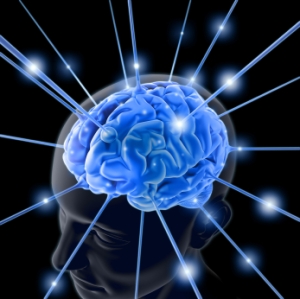
Who should take this teleseminar? Anyone working with, or interested in, the neurological effects of restorative or high performance training including allied health workers, public policy makers, physicians and physician assistants, ADHD specialists, social entrepreneurs in health and wellness, and of course, all members of the somatic, yoga, meditation, athletic and martial arts community. (Global citizens please note: The teleseminar will be conducted in English.)
What will I learn: This teleseminar introduces the core neuroscience concepts central to any top quality training program that teaches yoga and movement meditation. Concepts include: neuroplasticity, immersive attention, somasensory integration and more.
What are the key benefits of this teleseminar?: You will leave the teleseminar energized and armed with a grand pattern of understanding how neurologically important your work is as a proponent of yoga movement and meditation. Seminar discussion is particularly valuable for anyone dedicated to improving the development and integration of brain, body and mind.
How do I join this free teleseminar? Simply write to 2docgee@gmail.com with the word “yes.” Follow up information will be sent to you at your given email address.
With all neurotransmitters sparking, I wish everyone a happy new calendar year. May 2009 be the year we all resolve to consciously rewire our brains! Gong Ji Kuai Le!
Dr. G., Founding Director, George Greenstein Institute, creating a sustainable future by coaching bodies, brains and minds!
 Bio: M. A. Greenstein, Ph.D. is the “chief brainiac” of The George Greenstein Institute. An internationally respected author, keynote speaker and advocate for visual and somatic education, Dr. Greenstein has dedicated herself to advancing somatics and sciences and the field of neuroleadership by reframing the matrix of research and training to include neuroscience and fields of inquiry that address wholistic approaches to improving health, innovation and performance (Get HIP!) Dr. Greenstein will be teaching meditation at TED 2009, and moderating a panel on Social Entrepreneurship at the upcoming 2009 Creativity conference: Worlds in the Making!
Bio: M. A. Greenstein, Ph.D. is the “chief brainiac” of The George Greenstein Institute. An internationally respected author, keynote speaker and advocate for visual and somatic education, Dr. Greenstein has dedicated herself to advancing somatics and sciences and the field of neuroleadership by reframing the matrix of research and training to include neuroscience and fields of inquiry that address wholistic approaches to improving health, innovation and performance (Get HIP!) Dr. Greenstein will be teaching meditation at TED 2009, and moderating a panel on Social Entrepreneurship at the upcoming 2009 Creativity conference: Worlds in the Making!
Tags:Adult Neuroplasticity, Exercise and the Brain, M. A. Greenstein, Meditation and Executive Function in the Brain, Neuroplasticity and Learning, Neuroscience of Attention, Social entrepreneurs and the Brain, SpaceSuit Yoga and Neuro Leadership, The George Greenstein Institute, Yoga and ADHD, Yoga and Children, Yoga and the Brain
Posted in Advances in Neuroscience, Brain, Brain Technologies, Cognitive Science, Contemplative Education, Meditation, Mental Practice, Mind/Brain Training, neuroleadership, Neuroplasticity, Traumatic Brain Injury, Uncategorized, Whole-Brain Neuroscience, Yoga | 1 Comment »
December 29, 2008
A quick Spacesuit Yoga Twitter!: Transcendental Meditation shown to reduce symptoms of Attention Deficit Hyperactivity Disorder (ADHD) in children
A small, though important study was just published in the peer-review journal Current Issues in Education > Volume 10, 2008 > Number 2, showing the positive correlation between T.M. practice, stress reduction and improvement in use of executive function in school children ages 11-14. Scientists limited the study to students with pre-existing diagnoses of ADHD made by a physician or psychologist.
The study was conducted as a team effort between members of a private research firm, researchers from the Center for Brain, Consciousness and Cognition at Maharishi University of Management and faculty at University of Arizona.
The link to the study: http://cie.ed.asu.edu/volume10/number 2/
This is terrific news for the meditation, ADHD, educational and neuroscientific communities at large!
[For those who know little about T.M. as a meditative practice, it is considered by T.M. researchers to be a ‘technique of “effortless transcending”’ (Travis, et al., 2002). Though I don’t debate the contributions T.M. makes to whole-brain health and happiness, I find statements like this negate the obvious neuroscience and cognitive question: “Where does one place one’s attention?” To that point, authors of the study distinguish the neuro-cognitive basis of T.M. as distinct from “concentration” practices like Zen breath meditation and from “contemplative” practices like Vipassana or Insight meditation. Clearly more research with rigorous interest in the rhetoric of description is needed to identify the neural network correlates to the many paths of meditation practice.]
I will continue to report on key studies of meditation research that impact how we in the global community, think about the relations of health to learning, memory, imagination and decision-making in children and adults!!
Synaptically yours!
Dr. G.
The George Greenstein Institute, dedicated to a sustainable future by coaching bodies, brains and minds!
Tags:Advances in neuro-education, Center for Brain, Consciousness and Cognition, Contemplative Education, Current Issues in Education, Maharishi University of Management, Meditation and Executive Function in the Brain, Neural Networks of Meditation, Neuroplasticity and Learning, Neuroplasticity and Meditation, SpaceSuit Yoga reports on Meditation and the Brain, Stress Reduction with Meditation, Transcendental Meditation and ADHD, Transcendental Meditation Reduces Anxiety
Posted in Advances in Neuroscience, Ancient/Future Technologies of the Body, Balancing the Brain Hemispheres, Cognitive Science, Consciousness, Contemplative Education, EEG & Consciousness, Meditation, Mind/Brain Training, Neural Networks, Neuroplasticity, Somatic, Uncategorized, Whole-Brain Neuroscience | 6 Comments »
December 18, 2008
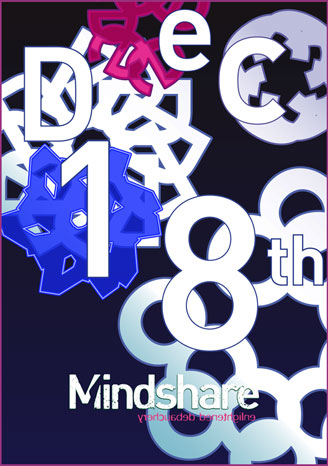
I’ll be speaking on best practices in “neuroleadership” this evening at MindShare.la. — the last brain-bash for 2008!
http://www.mindshare.la/
I’ll be joining an esteemed list of thought leaders, diva futurists and merry pranksters! All talks will be recorded and placed on the mindshare.la website as well as on my soon to launch GGI website! Speaking tonite, Dec 18, 2008…
Douglas Campbell / Freshmaker, Mindshare
The Physics of Santa Claus
M. A. Greenstein / Chief Brainiac, BodiesInSpace.com
Best Practices in NeuroLeadership
Eric Gradman & Brent Bushnell / Digital Pranksters, Mindshare Labs
Creating the ArtFall Installation
Kjerstin ‘KJ’ Williams, Ph.D. / Jazz Singer & Robot Diva, Applied Minds
Swarm Intelligence: From Bugs to Robots
Errol Gerson / Consultant, Professor, Humanist
What 40 Years of Teaching Has Taught Me!
Tony di Zinno / Photographer & Producer
Photojournalism in Afghanistan
Adam Mefford / Co-Founder, Mindshare
Mindshare 2008 Wrap Up
Tags:Barack Obama as neuroleader, bodiesinspace.com, David Rock and Neuroleadership, Michael Phelps as a neuroleader, Mindshare.la, neuroleadership, Oprah Winfrey as a neuroleader, spacesuityoga.com, The George Greenstein Institute
Posted in Ancient/Future Technologies of the Body, Body Maps, Brain, Brain Maps, Cognitive Science, Consciousness, Creativity and the Brain, Mental Practice, Mind/Brain Training, Neural Networks, neuroleadership, Whole-Brain Neuroscience | Leave a Comment »
December 14, 2008
Welcome back to the discussion on visual meditation and mandalas!
Within major wisdom traditions of meditation, be they spiritual, religious or scientific brain and health training programs, there is typically the path of education or entrainment. Meditation or mental practice, after all, is not the default mode of a mature human central nervous system that is wired for turbo”different detecting” in space/time! Remember, difference detecting is that old survival mechanism that helps all mammals determine: Will that eat me or will I eat that? Is it safe to sleep here or is it not? And now in our modern jungle version where we communicate and travel at the speed of light, our human brains and central nervous systems race faster and faster to keep up with the deluge of information, images, and experiences we encounter day after day!
It makes sense that in response to or retreat from cultures drunk on speed, we would turn to “best practices” of earlier times, namely the ancient art and science of meditation, to help us slow down, to assist us in creating equilibrium in our bodies and in our lives. The good news is that at the dawn of the 21st century, meditation traditions practiced around the globe are finding their way into translation in order to prevent suffering and benefit all humankind. A grand project indeed!
So how does visual meditation figure into all of the hoopla about meditation as being great for creating inner peace. lowering stress and brain training?
Drawing upon both Buddhist and Hatha Yogic traditions, we find two key lessons to enable the learner: Turning Inward and Consciousness of Abstracting.
Turning inward allows us to find the most important radar signaling systems of the human body: Breathing and Paying Attention, both made possible by a “conscious” brain. [I’m using the term “conscious” in the here and now, scientific sense of brain activation.]
Paying attention enables us to “consciously abstract” or selectively focus upon a sign, an feeling, a sensation, a process of movement out of all that we might experience at any given moment.
Now, suggesting that someone turn inward seems to be completely counter intuitive to surviving in a culture that demands external focus for reading signs for survival! In gung ho American culture, think of the mockery we make of the quiet, reflective types — the teen who hides in in fantasy novels, the poet who sits and reflects on life, the college student who prefers to study Art, Sufi Dancing or Zen practice rather than ice hockey!
The irony of course is that in today’s sports training, “turning in” is one of the key training tools of Olympic training practice! (Think of Michael Phelp’s incredible ability to turn inward and “focus.”!!!). So turning inward, drawing one’s attention away from the noise of the outside world and turning it toward the space of one’s own inner life is a key step of Hatha Yoga, Zen, T.M. and Vipassana or Mindfulness traditions.
You might be saying at this point, “O.K., turn inward. And consciousness of what? How exactly do I use a visual image placed outside my own body?
Good question: Here’s the neuro-scoop and poop on using visual mandalas: (more…)
Tags:Art and Meditation, Art and the Brain, Brain Training and Meditation, Broadway Boogie, Consciousness of Abstracting, Meditation and the Brain, Mental Practice, Michael Phelps Trains with Focus, Monkey Mind, Neuro-Aesthetics, Neurology of Art, Phil George Surfboards, Piet Mondrian, Pratyahara Meditation, Ramachandran's universal laws of art, Stress Reduction and Meditation, V.S. Ramachandran, Visual Mandalas
Posted in Ancient/Future Technologies of the Body, Art and the Brain, Brain Technologies, Brain Training, Breath, Cognitive Science, Consciousness, Contemplative Education, Meditation, Mental Practice, Mind/Brain Training, Mindfulness Practice, Neuro-Aesthetics, Religion and the Brain, Whole-Brain Neuroscience | 2 Comments »
December 4, 2008
Questions have recently come from readers regarding how to choose a path of meditation? “How do I know which kind is good for me?”
Well dear readers, choosing a meditation (a.k.a. brain fitness practice) is like picking shoes or a favorite climate: It’s a question of fit. And if you’re like moi, the process is going to be a choosy one! By this I mean it takes a careful “buyer’s” attitude to shopping for a method that appeals to your cultural upbringing and sensibility and especially to your neuro-cognitive, emotional, and physical type. Indophiles and Asianists aside, meditation often comes as a package these days, branded with cultural associations that range from ancient jargon to colorful visual motifs!
Still in today’s on and offline markets of meditation clinics, therapies and retreat centers, it’s not so easy for the novice to delineate between Mindfulness, T.M. or Zen, Yoga and Qi Gong. Turning to neuroscience offers some help: Neuroscientists studying human brains before and after specific meditation practices, discover that different methods actually call on different networks and regions within the human brain and… produce different results accordingly!

Artist: Brook, Second Grade, 2004 online image
For example, Richard Davidson and John Kabat Zinn, key researchers in the neuroscience of Mindfulness meditation, published fascinating evidence in 2003, noting measurable and interdependent results in changing both brain waves as well as immune antibodies! (See cited reference below). Theirs is one of many studies that point to the interconnectivity between how we spend our time and where we take our minds!
Translation?: Lower your stress with meditation you accomplish three things: 1) you jumpstart the signaling of positive affect in your brain; 2. You raise your levels of resistance to flu as well! (Think of the money you could save on expensive pharma and drug store cold medicine!) And by the consistent practice, you activate the neuroplastic capacity of the brain to grow itself.
In my life long research and personal study of meditative practices, I find it helpful to ask 3 questions and notice 3 structural types of meditation to order to determine a relevant meditation brand type.
(more…)
Tags:Advances in Neuroscience, Attention Training and Meditation, Breath Meditation, Hatha Yoga, Kundalini Yoga, Meditation, Mindfulness and Immunity, Mindfulness Meditation and the Brain, Moving Meditation, Neuroplasticity, Qi Gong and health improvement, Self Improvement, T.M. Meditation, Yoga and the Brain, Yoga Journal, Zen Meditation
Posted in Advances in Neuroscience, Body, Brain, Breath, Cognitive Science, Meditation, Neuroplasticity, Somatic, SpaceSuit Yoga, Whole-Brain Neuroscience | 3 Comments »
December 3, 2008
GOOD EVENING ALL,
Tonight, a meditative tribute to all those who suffer from TBI, sent to me directly from a reader: I’ve left in her use of color for emphasis. And for my comadres who detect the patriarchal focus: Have heart; Kipling was writing in the 19th century.
IF
by Rudyard Kipling
If you can keep your head when all about you
Are losing theirs and blaming it on you,
If you can trust yourself when all men doubt you
But make allowance for their doubting too,
If you can wait and not be tired by waiting,
Or being lied about, don’t deal in lies,
Or being hated, don’t give way to hating,
And yet don’t look too good, nor talk too wise:
If you can dream–and not make dreams your master,
If you can think–and not make thoughts your aim;
If you can meet with Triumph and Disaster
And treat those two impostors just the same;
If you can bear to hear the truth you’ve spoken
Twisted by knaves to make a trap for fools,
Or watch the things you gave your life to, broken,
And stoop and build ’em up with worn-out tools:
If you can make one heap of all your winnings
And risk it all on one turn of pitch-and-toss,
And lose, and start again at your beginnings
And never breath a word about your loss;
If you can force your heart and nerve and sinew
To serve your turn long after they are gone,
And so hold on when there is nothing in you
Except the Will which says to them: “Hold on!”
If you can talk with crowds and keep your virtue,
Or walk with kings–nor lose the common touch,
If neither foes nor loving friends can hurt you;
If all men count with you, but none too much,
If you can fill the unforgiving minute
With sixty seconds’ worth of distance run,
Yours is the Earth and everything that’s in it it,
And–which is more–you’ll be a Man, my son!
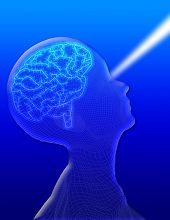
For up to date information on how to heal and prevent Traumatic Brain Injury, go to http://www.brainline.org
Synaptically yours,
Dr. G.
|
Tags:Advances in Neuroscience, Brain Science, Meditation with Poetry, Poetry Therapy, Right/Left Brain Therapy, Rudyard Kipling, Self Improvement, Traumatic Brain Injury
Posted in Advances in Neuroscience, Brain, Brain Training, Cognitive Science, Meditation, Mind/Brain Training, Neuro-Aesthetics, Right/Left Brain, Somatic, Whole-Brain Neuroscience | 2 Comments »
December 1, 2008
For those who have been following the Mumbai Siege and the news on the New York Wal-Mart mob murder, I suspect you are as stunned and horrified by the tragedy and madness of late. These are (sigh)… challenging times.
Yet in today’s edition of The New York Times‘ Week in Review, we read the following: ‘No matter how stressful the conditions, some of us are just genetically inclined towards calm…. or else we learn to manage the neuroticism.’ I’m not sure claims of suffering from high level cortical stress count in a case of neuroticism. Sure, in Jewish and Italian jokes this side of the Pacific, the motif of the suffering mother lends itself to Freudian and Hollywood overtones. But we’re in the age of a paradigm shift, where cultural stereotypes give way to real time strategies that manage the sweaty, messy corporeality of stress: Crying, Screaming, acting out — the drama of human emotion makes it damn near impossible for some of us to calm ourselves down.
One might think this is all a chicken or egg question, but as contemporary neuroscience makes clear, stress–-be it PTSD, sudden shock or chronic stress endured by those in untenable situations–shuts down thinking. Period. The effects can be neurologically devastating: In the U.S., University of California, Irvine researchers have shown that short term stress like long term chronic stress, reduces cellular connections in the hippocampus, the brain region identified with operations of learning and memory. At a time when stress levels are soaring through roofs of homes sliding into default mortgages, we really do need to find a collective way to calm down.
In weighing the options, meditation seems to make a difference, both in reducing stress and in creating some powerful neurological grown patterns. Notable research conducted at mindfulness medical clinics set up at UCLA and at Harvard signifies a movement toward using meditation to mediate stress and poor health. Harvard researcher Sarah Lazar has already shown that Mindfulness Meditation is correlated with a growth of cortical tissue in the frontal cortex and insula (the area said to integrate emotionally relevant, sense perceptions.)

QuBitTechnologies, 2007
I invite readers to peruse this blogsite for how-to’s in stress-reducing, meditative breathing practice, or write in for suggestions of practices that bear relevance to your current situation and learning style.
May the breath be with you.
Dr. G.
Tags:Advances in Neuroscience, changing neurotic habits, Emotional Intelligence, Harvard Mindfulness, Health and Fitness, Insula and sensory perception, Mindfulness Meditation, Neuroscience of Stress, New York Times on the genetics of calm, Sarah Lazar meditation research, Science of Meditation, Self Improvement, SpaceSuit Yoga and the Brain, The Black Friday Wal-Mart Mob, The Brain and Chronic Stress, The Mumbai Siege, UCLA Mindfulness
Posted in Advances in Neuroscience, Body, Brain, Breath, Cognitive Science, Meditation, Mind/Brain Training, Mindfulness Practice, Neuroplasticity, SpaceSuit Yoga | 2 Comments »
November 27, 2008
The Platform: Society for Neuroscience 8 Core Concepts
The Twitter: The Human Brain….it gets curiouser and curiouser!
The Big Idea: Curiosity is the natural province of the human brain!
Of the 8 Core Concepts put forward recently by the Society for Neuroscience, Concepts 7 & 8 may be the most important to drive home, not just to kids and teens but to culture changers and thought leaders of any age: What makes these two concepts so special? Gather for yourself:
7. The human brain endows us with a natural curiousity to understand how the world works. [Notice it doesn’t say why the world works]
8. Fundamental discoveries promote healthy living and treatment of disease.
[http://www.sfn.org/index.cfm?pagename=core_concepts]
For those of you who worship at the temple of the incurious, I guess you can stop reading here. But if you stay with me, I bet it’s because you, like many of us, wish curiosity would come back into style, not in the form of paparazzi gossip feeders but more in the way of thirst that drives explorers, artists and scientists to wander this earth, striving to reach new vistas of insight and understanding. Those of you who saw the recent Werner Herzog film Encounters at the end of the World, will have an idea what I mean. Or check out http://www.stellaraxis.com, a stunning project organized by my dear colleague Lita Albuquerque, who like Herzog, received National Science Foundation grants for art and science expeditions to study the biosphere of Antartica.
By emphasizing curiosity as a given condition of the human brain, SfN sets up the logic for neuroscience itself, that is, to pose questions about the very thing that enables us to be curious, i.e., the brain extended by the nervous system. In a world suffocating with information overload and in a country like the U.S. that has shown venal scepticism towards scientific endeavors, it’s a rare day that we chance to relish scientific achievement. Still, leaders of SfN assure us that neuroscience is that field that will astonish us with “unexpected discoveries that can benefit humanity.”
A colleague recently wrote of neuroscience as perhaps, the single most creative field study within his lifetime. Given my reading and in light of conferences I’ve recently attended, I would have to agree: We are witnessing the rapid emergence of a science that overturns some of the fundamental questions of human physiology, psychology and philosophy while bearing out the truth of others. And with that revolution comes the development of new technologies that allow us to penetrate into the mysteries of Alzheimer’s, Parkinson’s, TBI along with a host of other brain and nervous systems disorders!
Of the many disruptions, one of my favorites is the evidence pointing to the neuroplastic ways in which we ourselves can change our brains and transform stress, injury and unhappiness through daily practice of meditation or focused states of attention.
I will return to these subjects as they are at the heart of my mission in setting up this blog along with a new one that will launch in weeks to come!
Stay tuned and for those in the States, I’d like to dedicate this Thanksgiving holiday to all of the researchers, inventors, intellectuals, artists, coaches and teachers who dare to use their curiosity and encourage others to do so!
Happy Turkey Day! May the Breath Be With You!
Dr. G.
Tags:Advances in Neuroscience, Brain and Curiosity, Curosity as a main value of neuroscience, Encounters at the End of the World, Lita Albuquerque, Meditation and the Brain, Neuroplasticity, Neuroscience Core Concepts, Society for Neuroscience, support for scientific research, Traumatic Brain Injury, Werner Herzog, www.stellaraxis.com
Posted in Advances in Neuroscience, Art and the Brain, Brain, Brain Technologies, Cognitive Science, Meditation, Mindfulness Practice, Neuroplasticity, Whole-Brain Neuroscience | Leave a Comment »
November 24, 2008
The Platform: Society for Neuroscience: The 8 Core Concepts
The Twitter: Pssst: The brain is the most complex organ in the human body.
The Big Idea: If the brain is the body’s most complex organ, bring on the methods of complexity analysis and think neurotechnology!
The frontier of 21st century neuroscience and neurotechnology can be easily likened to cowboy territory — a rough terrain scoped out by outlaws trying to corner a market while sheriffs attempt to create law and order in the bush!
 In today’s story of the brain, the Society for Neuroscience is that sheriff and the bush of public awareness is as open and dangerous as the wild west! Founded in 1969 and with a new building in Washington D.C, SfN is becoming more and more poised as thought leader, policy maker and leading political advocate for neuroscientists working in the U.S. and abroad.
In today’s story of the brain, the Society for Neuroscience is that sheriff and the bush of public awareness is as open and dangerous as the wild west! Founded in 1969 and with a new building in Washington D.C, SfN is becoming more and more poised as thought leader, policy maker and leading political advocate for neuroscientists working in the U.S. and abroad.
At a time when scientific research in the U.S. has been under attack by ideological religious and political arguments (c.f. Sarah Palin’s infamous fruit fly statement), SfN has picked up the banner of public outreach and set about defining the borders of the neuroscience territory. The first order of business: Establish a set of core concepts and principles for the lay audience, especially for educators teaching science to children and youth at at the K-12 levels (that’s pre-school, primary secondary ed. for our non U.S. readers.)
You can download the concepts at
http://www.sfn.org/index.cfm?pagename=core_concepts
For the neuroleaders, social entrepreneurs and somanauts who follow this blog and for new readers (welcome!), the first concept is worth our attention: [The] Brain is the body’s most complex organ. [my edit]
Please read on….
*******************************************************************
Let’s look at that modifer “most complex.” Think of it: complex, as in tough but not impossible to figure out; complex is in dense, non-linear networks signaling throughout the whole brain, complex as in, ‘gee we need new technology to help us see and recognize the neural patterns that are actually going on in a traumatically injured brain, a dreaming brain, a meditating brain, a brain calculating the high jump or high math!
What I find telling about SfN’s core concepts is this: By naming the brain as complex, researchers open a door to partnering with biotechnologists and systems analysts to update scientific inquiry.
At the ground level, what does this mean for us? What’s the take home message here?
To claim the brain as the most complex organ in the body is to insinuate 4 key points:
First, the brain is not structured as a simple pump and valve system, like the heart or the liver.
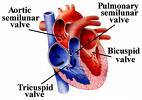
Rather neuroscientists influenced by infotechnology refer to the brain as a machine and liken it to a computer motherboard. This metaphor works at the micro levels of biotech analysis — neurochemistry — modeled off of closed systems.
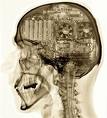
Yet given its neurogenerative and neuroplastic, a.k.a. self-organizing, capabilities, the brain’s own electro-colloidal, anatomical structure begs us to imagine instead, a branching or rhizome system at work. Here we can learn to picture the neuroplastic growth pattern of the brain!
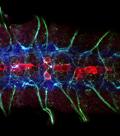
Rhizome image, research conducted by Dr. Torsten Bossing
Second, research and solutions will come to us more slowly than we might desire, unless we invest in the policies and creative approaches of educating our children in brain science and complexity studies.
Third, research and solutions depend upon our enthusiastic support of scientific and creative research into technologies designed to address the tough problems of health and aging that face us in societies throughout the world. Think Star Trek: Resistance is futile. Step into the flow.
Fourth and finally, social entrepreneurs should be on the lookout for new products, new industries and new eco- economic systems that produce, disseminate and control for the wastes stream of products that transform public awareness of brain training from cradle to senior tennis!
Points noted? Welcome to the 21st century, the age of complex problem solving!
Please remember to breath (and sleep)!
Dr. G.
P.S. For a kid’s p.o.v. on brain complexity, check out Dr. Eric Chudler’s terrific site at:
http://faculty.washington.edu/chudler/neurok.html
Tags:Advancing Neuroscience, Biotechnology and the Brain, Brain as complex organ, Brain Science in Schools, Dr. Eric Chudler, K-12 Brain Science, Neuroplasticity, Neuroscience as Cowboy country, Neuroscience for Kids, Neurotechnology a Green Economy, Resistance is Futile, Rhizomes and the Brain, Sarah Palin on Fruit Flies, Social entrepreneurs and the Brain, Society for Neuroscience Core Concepts
Posted in Advances in Neuroscience, Brain, Brain Maps, Brain Technologies, Cognitive Science, Neural Networks, Neuroplasticity, Traumatic Brain Injury, Whole-Brain Neuroscience | 1 Comment »
November 23, 2008
The Platform: Neuroscience 2008: Expanding Brain Awareness
The Twitter: ” I’m aware. Are You?” Brain Awareness Week 2009
The Big Idea: Neuroscience 2108: What will we know? How do we get there?
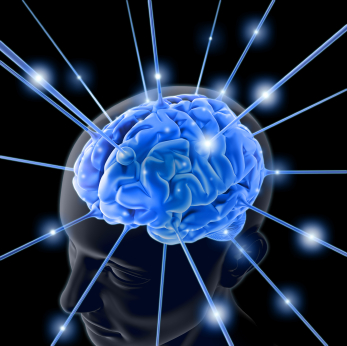
To an audience of young neuroscientists and neuro-leaders gathered to learn more about Brain Awareness Week 2009 (March 16-22), incoming Society for Neuroscience President Professor Thomas Carew reminded the group: ‘Neuroscience research rises out of and gives back to the public good.’
However noble (and ethical) the gesture, it seems there’s nothing cooler than studying the very thing that makes us “human.” And as I’ve tried to show over this last year, there are numerous good reasons why anyone living on Planet Earth in 2008 would want to know how a human brain actually works. More intimate with our bodies than our cell phones, more complicated than our laptops, the human brain begs our curiosity, our devoted attention, our awe! It goes without saying that with an average of 100 billion neurons signaling to each other on any given day, and with the prospect of neuroplasticity programmed into each nerve cell, the brain demands a readied corps of impassioned researchers capable and willing to spend hours, days, months and years observing and decoding the complex and emergent system we call
the nervous system.
The Society of Neuroscience and the Dana Alliance have joined forces to lay the foundational grounds for raising that corps by creating Brain Awareness Week, an international, consciousness raising event devoted to inspiring youth of all ages to learn about the science of the brain. To be frank, I have a lot of faith already in the new grad students entering neuroscience labs. As a generation suckled on the Internet and diagnosed en mass with ADD, they self-admittedly bring to the table, a seasoned sense of video gaming, social networking and a pharmaceutically managed skills of focus and attention. You’ll find them scratching their heads, trying to imagine how their parents ever thought the mind was not connected to the body. With their biotechologically retooled focus on neural networks, these future scientists will map the non-linear circuits of the brain with new neuro-infoschematic programs. Turning to the Allen Spine Atlas to which they will likely contribute, the next generation of neuroscientists will uncover the mysteries of how we regenerate neural tissue, of how we heal and walk again.
With 2009 Brain Awareness Week in mind, SfN leaders announced it will be promoting its 8 “Core Concepts.” In this coming week, I will introduce the core concepts as it relates to the concerns of this blog.
In the meantime, please write to me and ask how you and your friends, your network, your school or your organization can create a knock out Brain Awareness campaign for 2009! (No pun intended!)
With all nerve cells firing!
I remain synaptically yours,
Dr. G. sending breath your way!
For futher info:
The Society of Neuroscience <http://www.sfn.org>
The Dana Alliance <http://www.dana.org/brain.aspx>
Tags:Advances in Neuroscience, Brain Awareness Week, Dana Alliance, Dr. Thomas Carew, Future of Neuro-technology, Neuro-infomatics, Neuroplasticity, Neuroscience for Kids, Society for Neuroscience, The Allen Spine Atlas, Training Neuroscientists
Posted in Advances in Neuroscience, Body, Brain, Cognitive Science, Consciousness, EEG & Consciousness, Neural Networks, Neuroplasticity, Spinal Cord Injury, Spinal Cord Mapping, Traumatic Brain Injury, Whole-Brain Neuroscience | Leave a Comment »
November 19, 2008
The Twitter: “We remember to sleep so we can sleep to remember!” — William Fishbein
The Big Idea: Sleep is a prime protagonist in the story of neurogenesis!
Sleep. Aaah, what a beautiful thing!
Yet when we mere mortals are deprived of our zzzzss, we get cranky and frustrated, if not downright nasty in negotiating simple tasks like adding numbers on a grocery bill or attempting to avoid freeway gridlock by rerouting a shorter drive home! Talking to a local Starbucks barista, I learned having no sleep is “way worse than getting sick!”
I’m not sure researchers at Neuroscience 2008 have tackled the nuances of that claim, but of those who are working in the sleep research field, sleep in all of its blessed and disturbed varieties –uninterrupted, interrupted, fragmented – along with napping, is being explored with new enthusiasm.
Looking back on his long career in sleep research, William Fishbein at City University in NY, remarked how far and expanded the field of sleep research had become. Speaking on a press panel of distinguished sleep researchers, Fishbein presented data that pointed up to our neuro-cognitive need for naps. What do naps actually accomplish? Fishbein and colleagues showed that a snooze siesta reinforces the neural networks formed during morning hours devoted to relational (or associative) learning!
As previously reported on this blogsite, napping has moved front and center into the discussion of high performance and human productivity. Fishbein’s research adds to the richly layered network of findings that suggest memory, decision-making, rote skill performance and the substrate of neurogenesis are enhanced with a rested brain, depleted with a tired brain.
The take home message? Sleep, like oxygen, is necessary for growth and survival of the human brain/body on Planet Earth!
Reporting from D.C. this is Dr. G. wishing you an uninterrupted good night’s rest.
Tags:Cognitive Neuroscience, Naps and Learning, Naps and Memory, Naps and Performance, Neurogenesis, Neuroscience 2008, Neuroscience of Sleep, Relational Learning, Siestas for the Brain, Sleep and Memory, Sleep and Performance, Sleep Research, SpaceSuit Yoga at Neuroscience 2008, William Fishbein
Posted in Advances in Neuroscience, Brain, Brain Training, Cognitive Science, Consciousness, Contemplative Education, Human Physiology, Mind/Brain Training, Neural Networks, Neuroscience, Whole-Brain Neuroscience | 2 Comments »
November 17, 2008
A quick post during a simulated lunch break:
What’s hot at Neuroscience 2008? Sex, Drugs and Rock n’ Roll.
Let’s decode the ’60’s motif in terms of 21st century interests:
Sex: Neuroscientists are busy looking at neuropeptides and their effects on mating and long term animal bonding and attachment practices. It seems oxytocin and vasopressin release in small animals (voles) point up to “social” practices of trust and the sticky principle of alliance! Monogamy seems to trump extra “marital” wandering at the neurochemical level of animal behavior!

Voles in Love! Illustration by Dugland Stermer for TIME 2008
Drugs: In light of the toll drug abuse takes on human life and society, neuroscientists are conducting a large array of cortical studies that show the epigenetic and neurochemical factors that show up in drug addiction. There have been some pretty fascinating presentations, noting the “circuitry” of addiction cycles in mice and rats in administered and self-administered rodent trials. The drug of choice: Cocaine…. Food for thought: Jane Taylor of Yale mentioned a comparative study of cortical damage shown in cases of drug addiction and in cases of brain lesions.
Rock n’ Roll: The coupling of genetics and neurochemistry is producing new understandings of factors contributing to loss of motor control and imbalance. Of the several diseases that affect sensori – motor circuitry, Parkinson’s Disease has figured strongly in this conference, highlighted best by the conference organizers bringing in choreographer Mark Morris to teach neuroscientists about his movement classes for Parkinson’s patients! For the somanauts reading this blog, it’s worth noting as well, a presentation by Dr. Kadivar at Louisiana State U, noting the success of theraputic intervention in Parkinson’s patients through the use of auditory, rhythmic beats to stimulate patient walking!
Given the slow, arduous nature of scientific studies and rigor with which the outcome of studies is handled in the public sphere, it’s clear that in the vast universe of brain and central nervous system exploration, certain topics of study push the hot button of funding interests and social concerns. Joining bonding, addiction and disturbed sensor motor control in the 2008 topics list, one finds Autism, Traumatic Brain Injury, Neuroplasticity (in the Sensory and Prefrontal Cortex), and of course, the technologies that advance and afford the imaging and computation of norms and disturbances in all brain functions, namely the frontier fields of Neuroinfomatics.
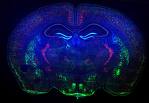
With an eye on the technologies that afford us new possibilities of inquiry of time/space correlates in brain function, I’m happy to report there have been focused sessions on neuroinfomatics and neurotechnology — including new schematic imaging projects like the Brain Navigator project produced by Elsevier (a publishing group based in Amsterdam) in partnership with the Seattle based Allen Institute for Brain Science — the same center whose spinal cord atlas project was previously mentioned on this site.
The take home message: New and Better Maps show more of the territory!
Synaptically yours!
Dr. G.
Tags:Allen Institute for Brain Science, Bonding studies, Brain Atlas, Brain Navigator, Drug Addiction and the Brain, Elsevier and the brain, Mating practices, Neuroinfomatics, Neuroscience of Love, Schematics of the brain, Technology and the brain, Therapies for Parkinson's Disease, Trust and the social brain
Posted in Advances in Neuroscience, Body, Brain, Cognitive Science, Neuroplasticity, Neuroscience, Spinal Cord Mapping, Traumatic Brain Injury | Leave a Comment »
November 17, 2008
The Platform: Neuroscience 2008, Washington D.C., Convention Center, Day 2
The Twitter: Systems analysis comes to Neuroscience!
The Big Idea: Brain Maps and Brain Circuits Open the Doors to Studies in Neuroplasticity!
If there is a primary metaphor, a picture which best communicates the paradigm shift in neuroscience, it is the image of “mapping.” Makes sense, right? Maps, as we all know, hail back to some of the earliest days of navigational science, when cartography was as much a visual art as an artifact of empirical science.

Today, mapping along with circuits, networks, and other info-tech terms have entered the lexicon of neuroscientific thinking — and to that end, has in part redefined how neuroscientists study the neurogenetic and neurochemical operations of the brain. No doubt, the cyberpunks and digerati reading this blog do so in complete and utter wonder. Yes, it seems a collective head scratching is in order when putting the neuroscience paradigm shift in context to the cybernetic revolution named nearly sixty or so years prior. Then again, as historian Thomas Kuhn reminds us, glacial is the speed of great scientific revolutions.
 Surveying the mob scene at Neuroscience 2008 and listening to some of the symposia lectures, I suspect the shift has come with a generation of researchers who grew up on Atari and first generation X Boxes, who have played with “code” on Second Life, or who have picked up a thing or two from grad students who majored in 3-D modeling before they decided to switch to neuroscience. It might also be the case that the cognitive systems science work of Maturana and Varela, the Neural Darwinist writings of Gerald Edelman and new biotech imaging tools have made their way into labs throughout the world. These are questions I will pose to the scientists and doctoral students during the next two days.
Surveying the mob scene at Neuroscience 2008 and listening to some of the symposia lectures, I suspect the shift has come with a generation of researchers who grew up on Atari and first generation X Boxes, who have played with “code” on Second Life, or who have picked up a thing or two from grad students who majored in 3-D modeling before they decided to switch to neuroscience. It might also be the case that the cognitive systems science work of Maturana and Varela, the Neural Darwinist writings of Gerald Edelman and new biotech imaging tools have made their way into labs throughout the world. These are questions I will pose to the scientists and doctoral students during the next two days.
In the meantime, under the clear, shining light of brain circuit mapping, “epigenetics” and “neuroplasticity” have taken center stage in neurodevelopmental and neurochemical studies. There were some like Zack Lynch of NIO* who questioned a round table discussion of NIH directors regarding the future of government funding to these studies. Dr. Nora Volkow of the NIH Drug Abuse program was one who offered a particularly optimistic view stating, ‘Epigenetic evidence opens the doors to future studies in neuroplasticity’ — studies that can unlock the mysteries of how human experience actually modifies and shapes the genetic markers of brain development.
Yes, gang, it’s “the brain creates culture, culture creates the brain” argument rethought in neurogenetic and neurochemical terms. Seems we are back to talking about nature/nature once more.
I leave with one thought on brain mapping, rethinking the words of American philosopher Josiah Royce who is quoted as saying, “The map is not the territory.”
Well, at Neuroscience 2008, the map is the territory, at least for now.
From D.C. this is Dr. G, wish you good neural networking!
*Neurotechnology Industry Organization
Tags:Autopoeitic Systems, Bodies in Space and the Brain, Bodiesinspace at Neuroscience 2008, Brain Circuits, Brain Mapping, Epigenetics, Gerald Edelman and brain mapping, Imaging the Brain, Maturana and Varela, Neural Networks, Neuroplasticity, Neuroscience 2008, NIH Drug Abuse Program, paradigm shifts in science, Society for Neuroscience, SpaceSuit Yoga and the Brain, Zack Lynch and NIO
Posted in Advances in Neuroscience, Brain, Brain Technologies, Cognitive Science, Neuroplasticity, Neuroscience, Self-assembly, SpaceSuit Yoga, Spinal Cord Mapping, Whole-Brain Neuroscience | Leave a Comment »
November 16, 2008
The Platform: NEUROSCIENCE 2008, Convention Center, Washington D.C.
The Twitter: How many neuroscientists does it take to put in a light bulb?
The Big Idea: The future of neuroscience lays in the hands of youth.
Intense? Immersive? An Indeterminate Neural Network? Making it through a crowd of over 30,000 people, and a four day roster that includes symposia, mini symposia, keynote lectures, satellite events and over a 1000 poster and slides sessions, does, as one AI scientist once remarked, separate the human from the robot.
And it is that extraordinary navigational capacity of human intelligence and specifically, the human brain, along with a whole host of questions about the brain that has drawn neuroscientists young and old to the rainy U.S. capital, to share their research, update their brains and discuss the future of advocating brain awareness at NEUROSCIENCE 2008!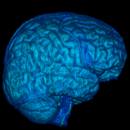
With neuroscience becoming the seductive frontier of 21st century biological, medical and cognitive science study, as well as the field of promising and lucrative applied biotechnologies, NEUROSCIENCE 2008 is the brain child of the Society for Neuroscience, a dedicated group of scientists that has grown in membership and in sensibility regarding the role they play in developing allied research, public policy and K-12 education where the brain is concerned.
For the lay public, the hard science description of pain-staking empirical studies is enough to send the unitiated back to talking about Leggos, Pac-Man and 7th grade science fair. Yet as inimitable choreographer Mark Morris was apt to point out to the audience during the opening Keynote discussion, “the problem of talking about what’s going on in the brain, is not mine but yours!”
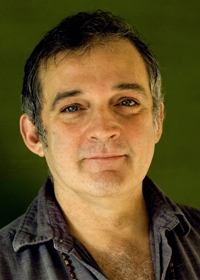
Mark Morris
It was rather confirming for yours truly, to find the president of SFN, who researches rhythm, choosing the once bad boy post modern choreographer to open the annual meeting. The brain is, after all, in a body, and from the sessions I attended today, it seems more and more scientists are reading to point to roles experiment and experience play in shaping neural growth and visa versa. And yet, the questions put to Morris suggest that scientists might want to do more dancing or as Morris reminded them, “more skipping,” if they want to study the choreographic corellates in the somasensory cortex. Morris, a performing artist known for his love and sensitivity to the musicality of dancing, and now for his work with Parkinson’s disease, drove home the message of using somatic intelligence: ‘It’s not something that abstact, like thinking, “now this left foot, on this second beat.” It’s more like: “Here… Now.”‘
I must admit, the rudimentary science questions put to Morris pointed up to the old C.P. Snow two culture divide, pitting science and art against each other like political foes. I for one, was rather shocked by the retro p.o.v. pervading much of the scientific thinking, signaling a real gap in the education of scientists regarding the “research” conducted by somanauts like performing artists and athletes. Then again, Morris, the uber cosmopolitan, had no better understanding of the science of brain/mind/body connectivity. Sigh.
 The afternoon Presidential lecture given by Dr. Allison Doupe offered a different picture of art and science. Doupe gave an exquisite talk on the pattern recognition capacities of songbirds, and posed the question: ‘What can we can we learn about neural basis of “vocal” practices as distinct from performances? How does the nervous system mediate behavior?’
The afternoon Presidential lecture given by Dr. Allison Doupe offered a different picture of art and science. Doupe gave an exquisite talk on the pattern recognition capacities of songbirds, and posed the question: ‘What can we can we learn about neural basis of “vocal” practices as distinct from performances? How does the nervous system mediate behavior?’
A terrific speaker, poised and passionate, Doupe’s research pointed to several neural circuits that appear to operate in directing the process of learning a new pattern of sound, practicing the new pattern, and performing it to accomplish a “salient” goal, in the case of songbirds, a male finch courting a female.
My favorite Doupe image? The one that showed how courting performance showed little randomness in pattern generation! The take home message? Forget the creativity bud. If ya want the girl, just sing the damn song!
Leaving some of us to ponder the implications of romantic innovation, Doupe’s lecture did reinforce one of the key ideas and metaphors, surfacing in the language of neuroscientists presenting at this conference: the role of pattern recognition and neural mapping in development and learning.
More tomorrow!
Synaptically yours,
Dr. G.
Tags:Allison Doupe, Brain Awareness, Dance and the Brain, Dancing and Knowing, Human vs Robot Intelligence, Mark Morris, Mark Morris & Parkinson's Disease, Neuroscience 2008, Society for Neuroscience, Somatic Intelligence, Song Bird Courting Behavior, SpaceSuit Yoga and the Brain
Posted in Advances in Neuroscience, Art and the Brain, Brain, Cognitive Science, Neural Networks, Neuroplasticity, Somatic, Uncategorized | Leave a Comment »
October 31, 2008
The Platform: The NeuroLeadership Summit, 2008, NY, morning session
The Twitter: Chocolate, Sex and Bonding with Mommy light up the same area of the Brain!
The Big Idea: The Brain responds in a similar way to physical AND social reward.
The morning session of NeuroLeadership Summit, Day 2 was devoted to the questions concerning the brain and the social world, especially the implications of neuroscience for the field of leadership and leadership development. Looming before an unwitting audience of the keenly business minded were the scientific and ethical questions of reducing scientific research to “brain phrenology” and it worse, running with information that is only “partial” to create a new “trend.” Diane Coutou, senior editor at the Harvard Business Review came out strong as a critic of egregious and misguided entrepreneurialism — citing the skepticism neuroscientists have in reducing a still burgeoning science to brand and product.
While I applaud Coutu’s warning, one can hardly blame a smart, cosmopolitan audience for being attracted to the novel aspects of brain science, especially when we are told by scientists like Matthew Lieberman that bonding and social rewards have as much impact on the brain as chocolate or money in a (stable) bank. Lieberman, who runs a social neuroscience lab at UCLA, entertained the audience with FMRI studies, that tested neurochemical response to the pain and pleasure that comes in relations to playing social games and social group relations: Categories of interest:
The brain correlates to thoughts and feelings we have when we are left in or out of a game.
The brain correlates to thoughts and feelings we have when we are given an ultimatum, especially if the ultimatum hinges on “fairness”?
From Lieberman’s talk emerges a clear thought: If gaming (play) is the work of children, here we learn that childhood is our training ground for gaming in life.
Lieberman’s point: The Brain is designed for learning to engage in social groups, having social relations, for recognizing social pain and reward. He even went on to say that from the social neuroscientific perspective, the brain appears predesigned for social relations, especially if one considers the role early bonding plays in the basic physical survival of the human species.
Break Out discussions addressed the implications for both business and education. In the education session, Renee Rolleri offered a plea for a progressive brain aware, creativity model for education and discussed her own collaborative efforts in designing a new charter school, The BLUE SCHOOL which she co-founded with the members of The Blue Man Group!
More on implications later today.
Synaptically yours,
Dr. G.
Tags:Brain Based Coaching, Brain-Based Leadership, Business and the Brain, Diane Coute, Harvard Business Review, Mattew Lieberman, NeuroLeadership Summit 2008 NY, Neuroscience and Advertising, Neuroscience and Product Design, Neuroscience of Leadership, Renee Rolleri, Social Neuroscience Lab UCLA, The Blue Man Group, The Blue School, The Brain and Social Rewards
Posted in Advances in Neuroscience, Brain, Brain Training, Cognitive Science, Creativity and the Brain, Mind/Brain Training, Neuroscience | Leave a Comment »
October 27, 2008
Dear readers,
News on the home front;
First, commentary continues to flow from Dr. Jill Bolte Taylor’s talk on Oprah. A neuro-leader if there ever was one. Please enjoy the discussion that ensued on this site.
One of the questions to arise: Should we be devoting our lives to training our brains for bliss, or should bliss pursuits be relegated to the cloistered arena of mystical experience? Of course, the dualist framing of the question is unfortunate for as Taylor herself points out, right-brain enhanced joy is not licenced or owned by religious seekers. Think of the pattern recognition operations that go on in the mind of painters or fabric designers?
For those interested in a critical, psychological analysis of American mystical experience, try starting with a standard and truly royal read: William James’ VARIETIES OF RELIGIOUS EXPERIENCE. James, the father of American psychology and a spacious thinker on the question of brain-mind relations, takes one on a tour of the diversity of American religiosity. Seems we in the U.S., have not strayed too much from our turn of the century predecessors.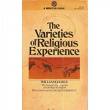 As James is one of my favorite American thinkers, I can’t help but think he would be totally turned on by the big movements in neuroscience and neuro-education — the sort Taylor insinuates in using neuro-anatomy to tell her deeply personal story of survival and transformation! I only wish James were alive today to join me at the upcoming 2008 Neuroleadership Summit in NY. I will be blogging on the event — and upon my return will be offering my services to those looking for consultants to design and set up neuroleadership and neuro-fitness programs in their companies and institutions
As James is one of my favorite American thinkers, I can’t help but think he would be totally turned on by the big movements in neuroscience and neuro-education — the sort Taylor insinuates in using neuro-anatomy to tell her deeply personal story of survival and transformation! I only wish James were alive today to join me at the upcoming 2008 Neuroleadership Summit in NY. I will be blogging on the event — and upon my return will be offering my services to those looking for consultants to design and set up neuroleadership and neuro-fitness programs in their companies and institutions
In the meantime: to embolden your own neuro-leadership program, try and practice a few of the basic “brain tips” mentioned on this site:
Mid-day napping
Bringing breath awareness to your athletic or other human performance training
Spinal rolls: juicing up the joints of the spine for greater blood and chi flow!
And a new one to be discussed in future blogs: Think Popeye and eat your spinach!
May the Breath Be With You!
Dr. G.
Tags:Brain and God, Jill Bolte Taylor, Jill Bolte Taylor at TED, Jill Bolte Taylor on Oprah, Mystical Experience and the Brain, Neuro-Leadership, Neuroleadership Summit, Psychology of Religion, Right Brain Bliss, Right Brain Religious Experience, SpaceSuit Yoga and the Brain, The Varieties of Religious Experience, William James and Neuroscience, William James and Religious Experience
Posted in Brain, Brain Technologies, Brain Training, Cognitive Science, Jill Bolte Taylor, Mind/Brain Training, Neuro-Aesthetics, Neuroplasticity, Neuroscience, Religion and the Brain, Right Brain Bliss, Right/Left Brain | 2 Comments »
October 2, 2008
The Platform: The New Idea Lab: The Urban Pod
The Twitter: Cat Naps are back in!
The Big Idea: Deep rest influences creative synthesis of ideas!
Remember kindergarten “quiet time”? — Those rows of squeaky cots, the whispering, the agony of waiting out time until we could get up to play!? Well leave it to science and inventive high tech ingenuity to tap the wisdom of childhood: Napping Pods!
Today high tech napping pods are on the market. Recently reviewed in Wired Magazine and the subject of Google buzz, these “metro” pods are said to promote brain rest with musical and other aids to encourage a neural shift into “quiet time.”
From the standpoint of neural rest, I love it when science reinforces a childhood and an ancient wisdom, in this case, one that has long been recognized by the creative, the somatic and the psychological communities, namely: Incubation leads to creation! Yes, providing an appropriate break for neural rest during intense think-tanking allows our brain to rest in order to digest the onslaught of ideas, feelings and intuitions. Nap pods, in other words, mimic the “rest and digest” processes of our parasympathetic nervous system – the system that allow our bodies to restore energy that we’ve depleted with activity between meals.
The more we learn about the role of parasympathetic nervous system in brain/mind/body functioning, the more we understand why cognitive scientists would target sleep to understand how the brain replenishes itself during naps. And the more we learn about the role of sleep and neural rest in creativity, the more we can appreciate why artists and writers naturally choose to include aimless doodling into their studio practice or why business coaches and psychotherapists advocate relaxation to counter creative blocks, or why leading yoga teachers insist on incorporating savasana (“corpse pose”) and even yoga nidra (“waking sleep”) into one’s daily yoga practice.
So whether you’re brain-storming a new idea, preparing creative strategies for a race, improving “your game” or opening the channels of artistic practice, consider all of the possibilities, both high and low tech for catching some zzzzzzssss!
For more tips on brain rest, feel free to surf this blog. ***
Here’s to Brain Rest!
Dr. G.
***For corporate or private consults on brain and body wellness and high performance, please write to me through the GGI website or leave a comment below.
Tags:High Performance, Learn Effective Rest through SpaceSuit Yoga, Mental Practice and Peak Performance, Metro Pods, Napping Pods, Napping with the GGI, Parasympathetic Nervous System, Savasana, Sleep and Creativity, The Science of Creativity, Yoga Nidra, Yoga of Sleep
Posted in Advances in Neuroscience, Art and the Brain, Body, Brain, Brain Technologies, Cognitive Science, Creativity and the Brain, Human/Machine Interface, Meditation, Mental Practice, Mind/Brain Training | 1 Comment »
September 10, 2008
The Platform: The Culture of Stress
The Twitter: Stress travels throught the body!
The Big IDEA: Stress the Mind, you stress the brain. Stress the Brain you stress your vital organs!!!!

Remember the body song we use to sing as kids?: “The thigh bone is connected to the knee bone and the knee bone is connected to the shin bone….” Well kids often know best and today, we have learned from traditional Western, Chinese, and Indian Auryvedic medicine that like life, the body is a complex system of interdependent systems. Stress in one is bound to affect the others.
A lesson I learned well in the acupuncturist’s office as I lay on the table needled so my “shin” would calm down. A visit to my brilliant Chinese Medical Doc, always reminds me of the effects of mental stress and anguish on on our kidneys and adrenals, on the connective tissue that wraps every fiber of our neuro-muscular being. And now, centuries later, research from contemporary neuro-science enriches the Chinese picture of human anatomy and illness. The brain — which connects through the central nervous system — to all other systems in the body, takes the hit from stress– what in this blog has been previously noted as the condition of “Neural Wreckage.”
In other words, new travels fast! The mounting tension from handling work, family, economic strife, the shift in global warming and the endless political battles of our day all adds up to one tight, drained, exhausted body/mind!!!!!!! I’ve spoken before of “technological time outs.” Now as we face the change of seasons and tough world issues, please ask yourself: How can I find a way, now and then, to “unplug from the culture of stress?
This blog will continue to offer ways to think about and avoid increasing Neural Wreckage along with other SpaceSuit Yoga detox tips.
May the Breath Be With You,
Dr. G.
Tags:Auryvedic Medicine, Brain Physiology, Chinese Medicine, Cognitive Time-Outs, Neural Wreckage, SpaceSuit Yoga Detox Tips, Stress from 2008 Election, Stress on Adrenals, Stress on Kidneys, Technological Time Outs, Whole Systems and the Human Body
Posted in Advances in Neuroscience, Body, Brain, Breath, Cognitive Science, Human Physiology, Somatic, Whole-Brain Neuroscience, Yoga | Leave a Comment »
July 3, 2008
Well the summer solstice is here bringing with it much news from the neuroscience sector. 2008 is truly proving to be the Year of the Brain!!!!
In case you haven’t noticed, more brain empowerment and anti-aging gizmos and gadgets are entering the internet market designed to increase neuroplasticity. (Look for my upcoming blogs on sharpbrains.com and on the recent UCLA conference on anti-aging and regenerative medicine!)
Yet the more compelling story is the heightened critical mass awareness of brain function and brain injury made possible by Dr. Jill Bolte Taylor’s TED talk (see my coverage of Bolte Taylor’s talk and the generous comments to issue forth since I reported on Taylor’s TED presentation — February and March archives of this blog.).
 I am emboldened by the fact that Dr. Taylor’s talk has reached numbers of people whose lives have been challenged by stroke and other traumatic brain injuries. Much to my surprise however, is the way Taylor’s talk has inspired others to come forward with stories of spiritual enlightenment. To those of you who have generously shared your thoughts and stories vis a vis Taylor’s life story, thank you. I will continue to use this blog as a vehicle for bringing the most up to date news and links to info concerning all things “brainy’ and brain-related.
I am emboldened by the fact that Dr. Taylor’s talk has reached numbers of people whose lives have been challenged by stroke and other traumatic brain injuries. Much to my surprise however, is the way Taylor’s talk has inspired others to come forward with stories of spiritual enlightenment. To those of you who have generously shared your thoughts and stories vis a vis Taylor’s life story, thank you. I will continue to use this blog as a vehicle for bringing the most up to date news and links to info concerning all things “brainy’ and brain-related.
For those have not seen Jill Bolte Taylor’s TED presentation, simple go to
http://www.ted.com and search for Jill Bolte Taylor talk
or copy the link below and place it in your url searchbox
http://www.ted.com/index.php/talks/
jill_bolte_taylor_s_powerful_stroke_of_insight.html
With the issue of stroke in mind, readers please consider the critical implications a new bill recently introduced into Congress for immediate consideration, namely, the National Neurotechnology Initiative Act.
The NNTI is a $200M/year initiative designed to foster new discoveries and accelerate the development of new and safer treatments for the one in three Americans living with a brain-related illness, injury or disease. Championing the NNTI are Senators Pete V. Domenici (R-NM) and Patty Murray (D-WA) and Representatives Patrick J. Kennedy (D-RI 1st) and Ileana Ros-Lehtinen (R-FL 18th) who have called upon Congress to act quickly on this important legislation.
According to the NNIT Act website, this legislation will accelerate the development of treatments for Alzheimer’s disease, autism, addiction, ALS, anxiety, depressive disorders, epilepsy, hearing loss, migraine, multiple sclerosis, obesity, pain, Parkinson’s disease, post-traumatic stress disorder (PTSD), schizophrenia, age-related macular degeneration, sensory disorders, sleep disorders, spinal cord injury, stroke, traumatic brain injury and many orphan diseases of the brain and nervous system.
One can only image the medical advancements to benefit from the passing of the bill. And in during this savage war-time, with scores of American troops returning home with traumatic brain injury and PTSD, enlightened legislation promises to up the ante on neurological research and application. Think of Bolte Taylor’s talk and take action!!
A neurotech advocacy group – http://www.neurotechindustry.org –– has provided sample letters to use to write to Congress men and women in your districts and states, asking them to approve the bill. PLEASE CLICK ON THIS WEBSITE FOR LETTERS AND ACCESS TO YOUR CONGRESS MEN AND WOMEN!
More to come on brain matters.
In the meantime, may the long days of summer ahead provide you with a chance to take time out to nourish, empower and embody brain!
Tags:Jill Bolte Taylor, Neuroscience, PTSD, Right/Left Brain, Support for Military Families, Traumatic Brain Injury, Vet Rehab, Year of the Brain
Posted in Advances in Neuroscience, Balancing the Brain Hemispheres, Body, Brain, Cognitive Science, Creativity and the Brain, Mental Practice, Neural Networks, Neuro-Aesthetics, Neuroscience, Religion and the Brain, Right/Left Brain, TED 2008, Traumatic Brain Injury, Uncategorized, Whole-Brain Neuroscience | 4 Comments »
May 16, 2008
Whether you’re thinking future spring season fashion or sports, Taiwanese researchers have taken baseball caps to a new level of design. The story below explains the “science of mind” whereby the wireless and portable cap can detect EEG signals and send feedback in real time.
Imagine the biofeedback possibilities in schools world wide, when teachers tell students to put on their “thinking caps!!!”
Wonders never cease in the Year of the Brain!
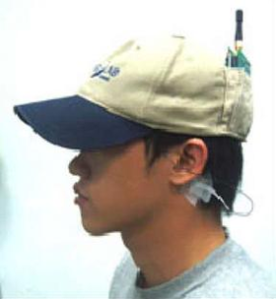
“http://www.physorg.com/news130152277.html”
Search for: A baseball cap that reads your mind
“It looks like an ordinary baseball cap. But when you put it on, the cap detects and analyzes the electroencephalogram (EEG) signals from your brain. It can even tell you if you’re getting too sleepy when driving based on your brain wave patterns. Similar technology could also allow you to control home electronics such as TVs, computers, and air conditioners, all by just thinking about them.”
Tags:Cyber Baseball, Cyber Baseball Caps, Human/Machine Interface, I think therefore I do., Mind over Matter, Telepathy
Posted in Advances in Neuroscience, Ancient/Future Technologies of the Body, Cognitive Science, Creativity and the Brain, EEG & Consciousness, Human/Machine Interface, Mental Practice, Mind over Matter, Neuro-Aesthetics | Leave a Comment »
March 15, 2008

http://www.ted.com/talks/view/id/229
In light of the enthusiastic conference response, Jill Bolte Taylor’s talk at TED 2008 has been posted on TED Talks! (see link above.) Sitting in the audience at Aspen, I can attest to the applause and sea of tears that filled the room — matching the wet eyes shown on satellite screen from Monterey.
Moved and excited by Taylor’s “outing” of a whole-brain picture of human experience, I thus find the comments to follow on TED Talks, a fascinating read on the struggle we continue to have in the “descriptive” stage of human experience.
By that I mean Taylor describes her “split-brain” experience during a stroke, distinguishing between right and left brain modes of meaning making. She herself refers to the serial and parallel processing modes which our brains exhibit in perceiving and organizing the stuff of the reality. And… she also distinguishes the experience of the split as a distinction between consciously feeling ourselves as the “life force power” of the universe, connected to everything, and the “‘cognitive … single, solid, separate being” that has identity, “the me” sense of being alive in the world.
My question to everyone: Which “mode” of description appeals to you or resonates more with your sense of the world: the metaphorical language of information processing or the metaphorical language of psychology? The language that speaks to an analytic, sequenced sense of pattern recognition and memory or a language that denotes a synthetic, “webbed” network of pattern recognition and memory?
Here again is the link to Taylor’s TED Talk and the comments that follow: http://www.ted.com/talks/view/id/229
I’ll be curious to hear your comments regarding your viewing and consideration of how we can speak of the “dual neural processors” of meaning in our world.
May the Breath Be With You!
Tags:Dr. Jill Bolte Taylor's TED Presentation, SpaceSuit Yoga, Split Brain Theory of Cognition, TED 2008
Posted in Cognitive Science, Jill Bolte Taylor, Neural Networks, Neuro-Aesthetics, Split Brain Theory of Meaning, TED 2008, TED Aspen 2008, Whole-Brain Neuroscience | 10 Comments »


 Bio:
Bio: 


